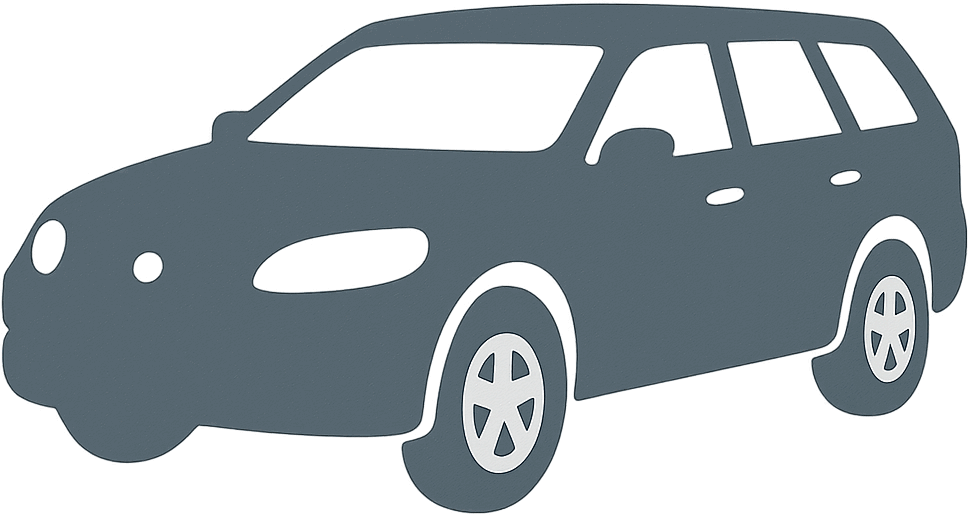 1979 Ford Taunus 80 Turnier (GBNS) Dimensions, Size & Specs
1979 Ford Taunus 80 Turnier (GBNS) Dimensions, Size & Specs
The Ford Taunus 80 Turnier (GBNS), produced from 1979 to 1982, is a classic station wagon known for its practical design and spacious interior, perfectly suited for families and utility-focused drivers. As part of the late 1970s and early 1980s Ford lineup, this model featured a robust build and a functional wagon body style that balanced cargo capacity with passenger comfort. Though exact dimensions for this generation are less commonly detailed, the Taunus 80 Turnier typically measured around 4.5 to 4.7 meters in length (approximately 177 to 185 inches), providing ample space for both passengers and luggage. The width offered comfortable cabin space and road presence, complementing the overall vehicle height that allowed for easy entry and exit as well as sufficient headroom. The station wagon was designed to offer versatility, with a rear cargo area that could be expanded by folding down rear seats, making it ideal for a variety of transport needs. The Ford Taunus 80 Turnier represented the reliable and practical European Ford models of its era, combining solid performance with family-friendly usability. It fit well within the segment of mid-sized wagons, competing effectively with other European and international station wagons of the time. Today, it holds classic value, appreciated by enthusiasts for its understated styling and functionality.
Discover the standout features that make the 1979 Ford Taunus 80 Turnier a leader in its class
Have a question? Please check our knowledgebase first.
The 1979-1982 Ford Taunus 80 Turnier station wagon has a length of approximately 4,570 mm (179.9 inches), a width of about 1,690 mm (66.5 inches), and a height close to 1,375 mm (54.1 inches). These dimensions place the vehicle squarely in the mid-size station wagon category for its era, making it spacious enough for family use while still manageable in urban environments.
While exact cargo volume figures for the 1979-1982 Ford Taunus 80 Turnier are not widely documented, typical station wagons of this size and era offered ample storage space. The rear seats can be folded down to significantly increase cargo capacity, making it ideal for carrying luggage, groceries, or equipment. Its practical interior layout was designed to maximize passenger comfort and utility, providing a versatile solution for families and professionals needing extra room.
The Ford Taunus 80 Turnier from 1979-1982 weighs approximately 1,150 kg (2,535 lbs). This moderate weight for a station wagon of its size helps balance fuel efficiency with handling stability. It offers a comfortable ride quality without being too heavy for its suspension setup. The weight is well-distributed for its rear-wheel-drive platform, ensuring predictable handling characteristics typical of mid-size wagons from the period.
Yes, the 1979-1982 Ford Taunus 80 Turnier generally fits into a standard single-car garage. Standard garages typically measure around 2,400 mm (7 feet 10 inches) in width and 4,800 mm (15 feet 9 inches) in length. Since the Taunus 80 Turnier's width is approximately 1,690 mm (66.5 inches) and its length is about 4,570 mm (179.9 inches), it comfortably fits within typical garage dimensions, leaving enough room for opening doors and walking around.
With a width of approximately 1,690 mm (66.5 inches), the Ford Taunus 80 Turnier is relatively narrow compared to modern station wagons, allowing for easier maneuvering and parking in tight urban spaces. This width was typical for mid-size cars of the late 1970s and early 1980s, striking a balance between interior space and external compactness. Drivers benefit from less difficulty squeezing into limited parking spots while still delivering enough shoulder room inside.
The Ford Taunus 80 Turnier features a wheelbase of approximately 2,615 mm (103 inches). This moderately long wheelbase contributes to a smooth ride and good straight-line stability, essential for comfortable wagon driving. The extended wheelbase also enhances interior legroom, particularly for rear passengers, making it more accommodating for family trips or long-distance drives. However, it remains compact enough to maintain reasonable maneuverability.
Compared to its predecessor, the Ford Taunus TC (introduced earlier in the 1970s), the Taunus 80 Turnier carried over the core design language but included some refinements in dimensions and styling details. While the length and width remained fairly consistent, subtle adjustments improved aerodynamics and interior space utility. The successor offered slightly more modern lines and detailing typical of late 1970s automotive trends, but the overall size and practical nature of the wagon remained a strong point linking the two generations.
The Ford Taunus 80 Turnier is comparable in size to other mid-size European station wagons of the late 1970s and early 1980s, such as the Opel Ascona Caravan and the Volkswagen Passat Variant of that era. With a length near 4,570 mm (179.9 in) and width around 1,690 mm (66.5 in), it falls within the typical range, offering competitive cargo capacity and passenger space. Utility-wise, it was well-regarded for practicality, balancing family use with respectable fuel economy and manageable driving dynamics.
The Ford Taunus 80 Turnier from 1979 to 1982 was most commonly equipped with rear-wheel drive, consistent with the Taunus line's traditional setup. Engine options included a range of inline-four and inline-six petrol engines, known for their reliability and reasonable power output for the time. This drivetrain configuration delivered balanced handling characteristics suited for a family wagon, with sufficient power for both urban and highway driving.
The height of the Ford Taunus 80 Turnier is approximately 1,375 mm (54.1 inches), which is relatively low for a station wagon, reflecting the aerodynamic design priorities of the late 1970s. This lower profile helps reduce wind resistance, contributing to better fuel efficiency and quieter cabin experience at speed. Inside, the height still affords adequate headroom for front and rear passengers, though taller occupants may find it slightly more confined compared to modern wagons with higher rooflines.
